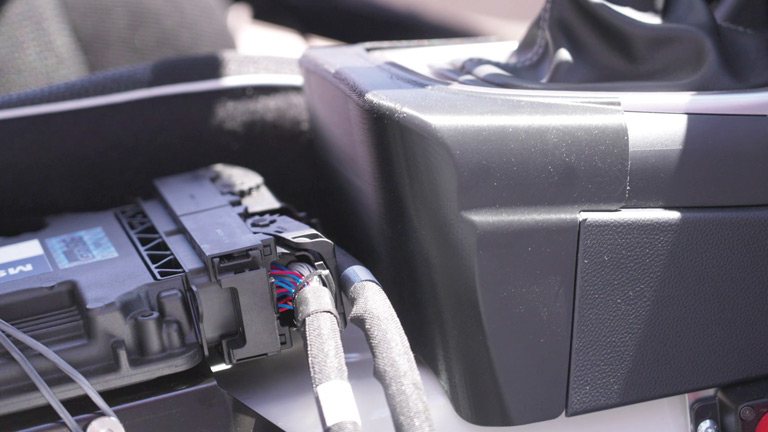 Stratasys supplies more than 30 3D-printed parts to Toyota race cars, including this center console cover.
Stratasys supplies more than 30 3D-printed parts to Toyota race cars, including this center console cover.
Racing has long been used to help automakers develop and test new technologies and parts. So it shouldn’t be surprising that the additive manufacturing (AM) industry also is embracing motorsports.
In fact, 3D-printing leader Stratasys Ltd. has been involved in racing for more than 20 years. Last year, the company was named an official partner to bring 3D-printed parts to all NASCAR Next Gen Cars, and this year it’s teaming with Toyota Racing Development (TRD) to produce the first-ever 3D-printed production parts for all 36 GR86 vehicles participating in the new Toyota GR Cup single-make racing series.
TRD is using the Stratasys Fortus 450mc, F370 and the new composite ready F370 CR 3D printers at its manufacturing facilities in Salisbury, N.C., and Costa Mesa, Calif. The industrial-grade 3D printers are used to create more than 30 racing parts—including the hood vent, engine inlet air-duct, rear wing mounts, center console cover and the door handle bezel (from plant-based materials)—as well as an FDM Nylon 12CF hood vent for the new Toyota GR86 production model.
AM allows race teams to build parts as needed. In fact, several new parts have been developed mid-season for immediate use. This includes a small clamp that was created to prevent the brake line from vibrating.
TRD also uses the Stratasys Direct Services (SDS) facility in Belton, Texas, to 3D print a clamp for the GR86. The process features the Stratasys H350 3D printer powered by the supplier’s SAF (selective-absorption fusion) technology and high-yield PA11 material.
The Belton shop is equipped with 33 SLS printers, with more due to be added later this year, and various post-processing capabilities. A 50% expansion also is planned, which will increase total floorspace to about 60,000 sq. ft. (5,575 sq. m.). More than a dozen materials are used for 3D printing in the facility.
Speeding Up Hills
Stratasys also is the exclusive supplier of 3D-printed parts for Radford Motors’ Type 62-2 Pikes Peak Edition racecar that competed in this year’s hill climb in June. The 710-hp supercar, which features more than 70 Stratasys 3D-printed parts, can rocket from zero to 60 mph in less than 2.2 seconds with a top speed of 160 mph.
Among the parts printed for the 62-2 are fenders, brake ducts and radiator cooling ducts. All the parts were built at the Stratasys plant in Eden Prairie, Minn., using the H350, F900, F770, 450mc and F370 printers. Stratasys also produced the prototype bodywork and tooling that went into the Type 62-2.
“Using so many 3D printed parts on the Type 62-2 gives Radford a serious competitive edge, as it takes considerable weight off the car, thus improving its overall performance,” said Rich Garrity, Stratasys’ chief industrial business officer. “The 3D-printed parts are also stronger and more resilient, and if something does happen to a part during testing or a practice run, they can recreate that part much faster than a traditionally manufactured part.”
The Radford Type 62-2 car sprinted up the iconic 12-mile hill (and 156 turns) in less than 10 minutes to finish 8th among 66 competitors.